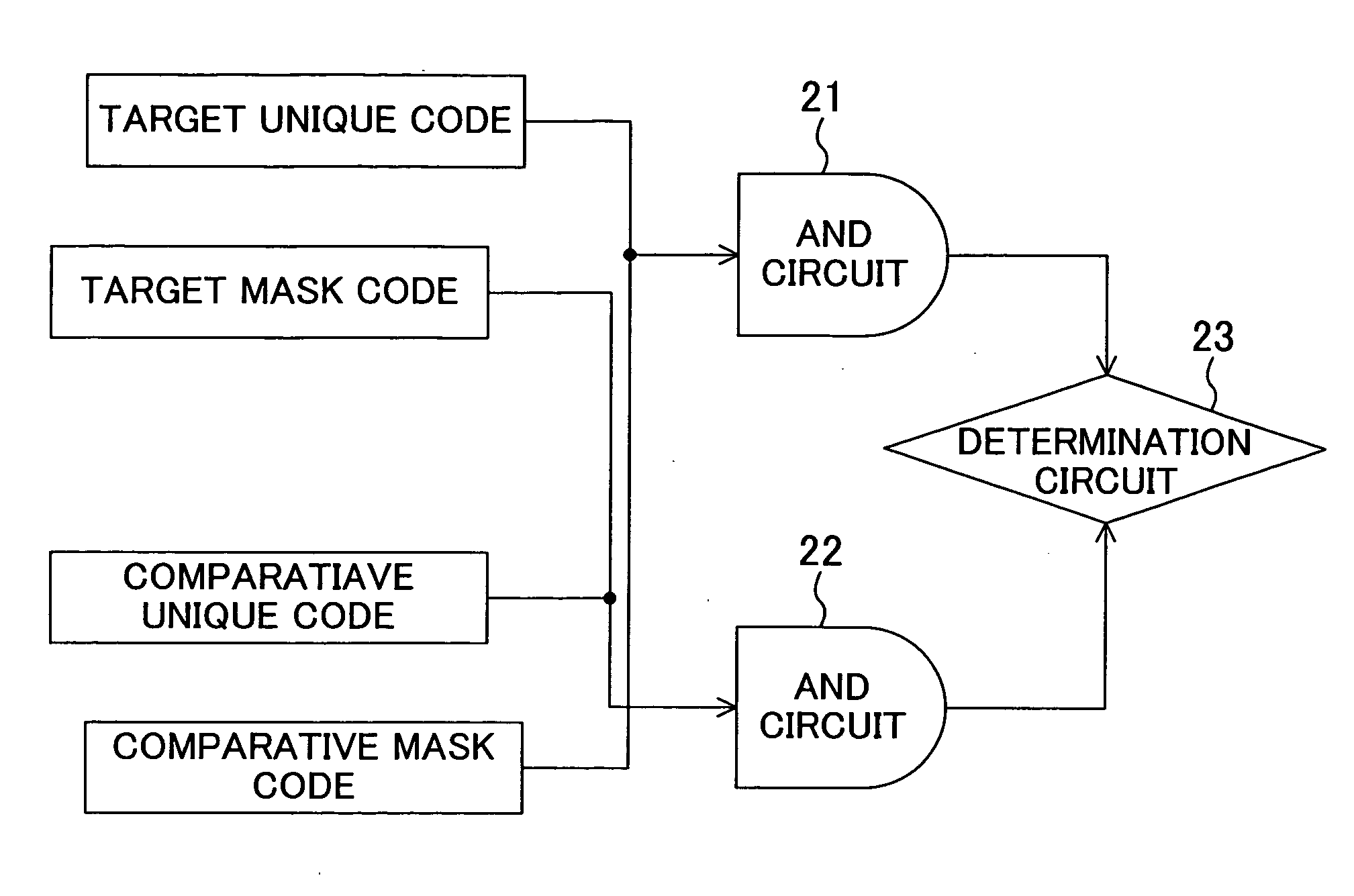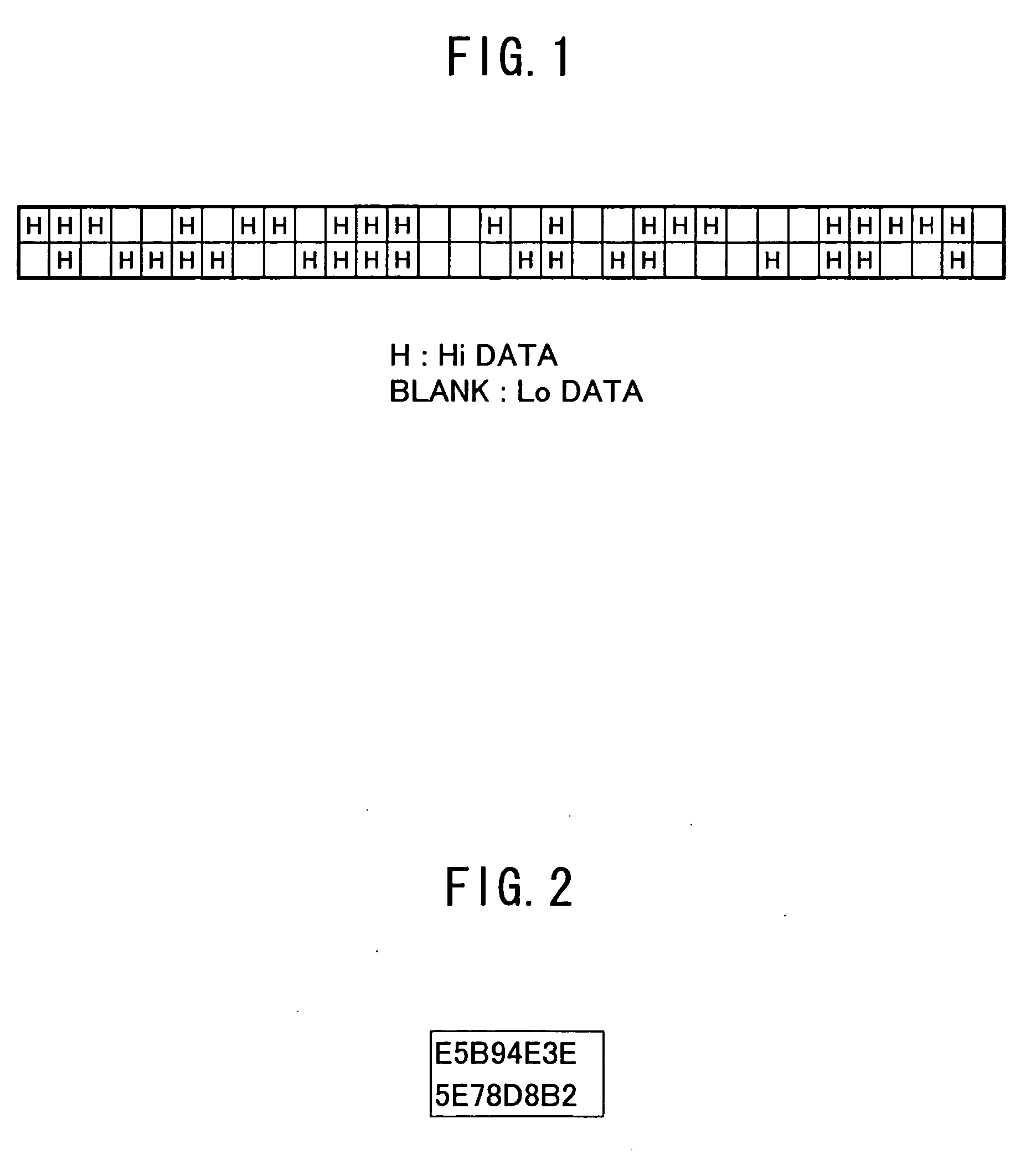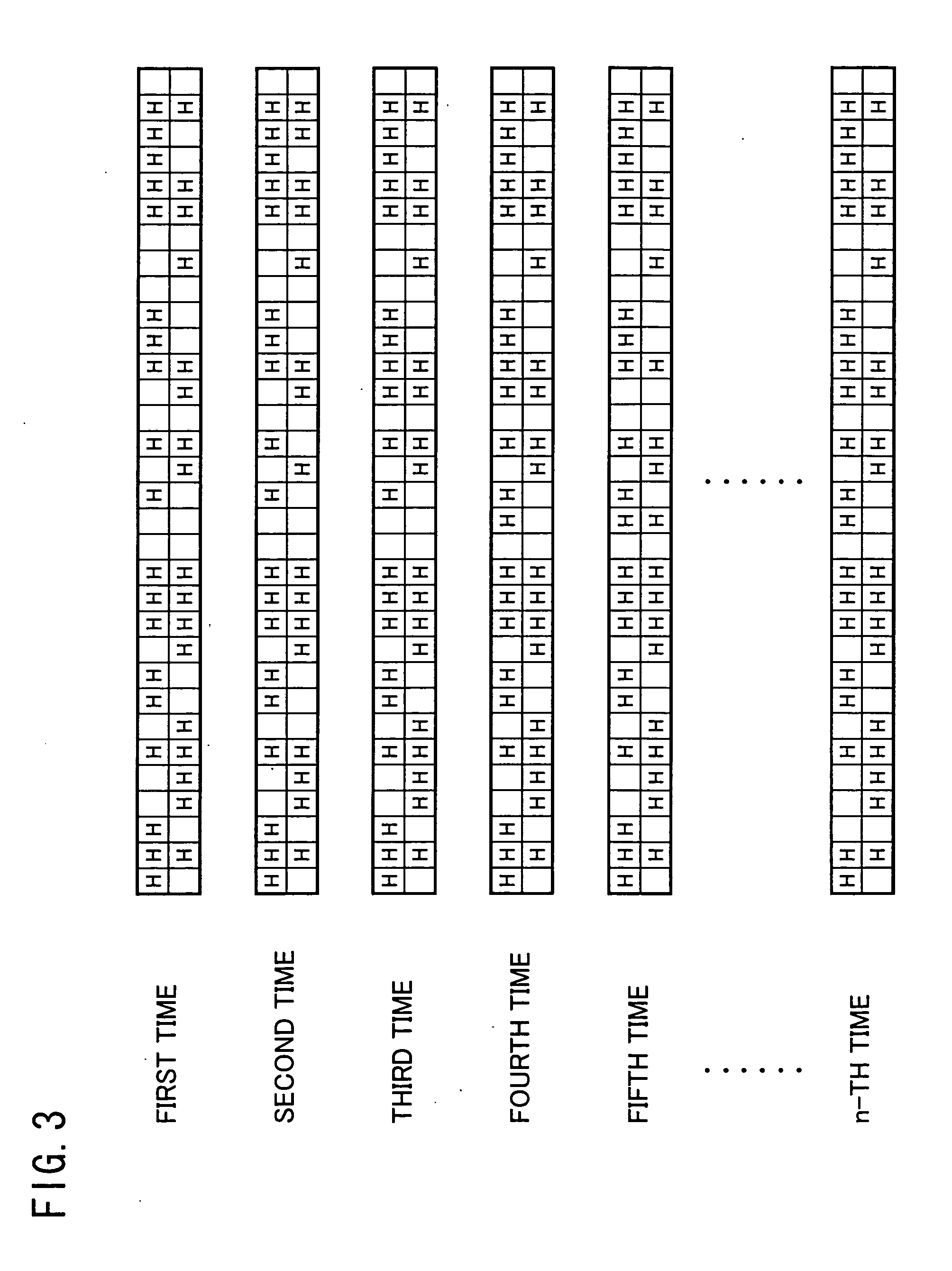Method for generating identification code of semiconductor device, method for identifying semiconductor device and semiconductor device
a technology for identification codes and semiconductor devices, applied in the direction of digital data processing details, measurement devices, instruments, etc., can solve the problems of consuming time and cost, affecting the identification of semiconductor devices, and complicated operation of writing information
- Summary
- Abstract
- Description
- Claims
- Application Information
AI Technical Summary
Benefits of technology
Problems solved by technology
Method used
Image
Examples
embodiment 1
[0038] Methods for identifying semiconductor devices (chips) according to the present invention are based on the following idea. In a semiconductor integrated circuit including a logic circuit or an system LSI, a large number of flip-flops, RAMs or static random access memories (SRAMs) formed by MOS processes or CMOS processes are generally provided. Each of these circuits is constituted by a plurality of MOS transistors and fabrication conditions thereof vary depending on the time, so that the transistor pattern size and the impurity diffusion concentration vary one wafer to another in a lot or depending on the position in a wafer. These variations in fabrication processes cause variations in operation output characteristics such as a variation in a threshold voltage even among transistors designed to be identical in specifications.
[0039] According to the present invention, in a semiconductor device including circuits each outputting a binary value of high (Hi) / low (Lo) (or 1 / 0), ...
embodiment 2
[0045] As described in the first embodiment, with a method for generating a chip identification code according to the present invention, an initial pattern code is obtained from signals output from SRAMs at specified addresses at power-on of a device and the obtained initial pattern code is used as an identification code. However, the same signal (data) is not always output from a specified address at the power-on. In particular, with respect to unstable memory cells exhibiting variations in characteristics such as transistor characteristics and memory cell electrical characteristics, outputs from these memory cells can vary, so that the output of Hi / Lo varies at every power-on in some cases. To prevent this variation, a method for ensuring identification of even a chip including such unstable memory cells is provided in this embodiment.
[0046]FIG. 3 shows tables illustrating n initial pattern codes repeatedly obtained by the method of the first embodiment using SRAMs including unst...
embodiment 3
[0063] In this embodiment, a method for ensuring generation of a stable ID code even when outputs from memory cells such as flip-flops or SRAMs vary through various processes such as packaging after the first ID code has been obtained.
[0064] In this embodiment, operation in which all the memory cells in a semiconductor device whose ID code is to be obtained are initialized to be “1” or “0” and then power is turned off and on again is repeatedly performed, so that an initial pattern code as shown in FIG. 3 is obtained a plurality of times. With this method, unstable memory cells are affected by charge remaining at initialization, although output “1” when all the memory cells are initialized to be “1” and output “0” when all the memory cells are initialized to be “0”. When operation is performed on the initial pattern codes obtained by using the circuit shown in FIG. 6, a unique code from which the unstable bits have been eliminated as Lo is generated. This method further ensures det...
PUM
 Login to View More
Login to View More Abstract
Description
Claims
Application Information
 Login to View More
Login to View More - R&D
- Intellectual Property
- Life Sciences
- Materials
- Tech Scout
- Unparalleled Data Quality
- Higher Quality Content
- 60% Fewer Hallucinations
Browse by: Latest US Patents, China's latest patents, Technical Efficacy Thesaurus, Application Domain, Technology Topic, Popular Technical Reports.
© 2025 PatSnap. All rights reserved.Legal|Privacy policy|Modern Slavery Act Transparency Statement|Sitemap|About US| Contact US: help@patsnap.com



